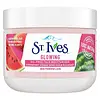What's inside
What's inside
 Key Ingredients
Key Ingredients

 Benefits
Benefits

 Concerns
Concerns

 Ingredients Side-by-side
Ingredients Side-by-side

Citrullus Lanatus Fruit Extract
Skin ConditioningWater
Skin ConditioningGlycerin
HumectantButylene Glycol
HumectantDimethicone
EmollientC13-15 Alkane
SolventPolyglyceryl-3 Methylglucose Distearate
EmulsifyingGlyceryl Stearate
EmollientGlyceryl Polymethacrylate
Cetearyl Alcohol
EmollientCarbomer
Emulsion StabilisingTromethamine
BufferingHydroxyacetophenone
AntioxidantSilica
AbrasiveAmmonium Acryloyldimethyltaurate/Vp Copolymer
Limnanthes Alba Seed Oil
Skin ConditioningEthylhexylglycerin
Skin ConditioningDisodium EDTA
Centella Asiatica Extract
CleansingPortulaca Oleracea Extract
Skin ConditioningVitex Agnus-Castus Extract
AstringentChamomilla Recutita Flower Extract
MaskingPhellinus Linteus Extract
Skin ConditioningArctium Lappa Root Extract
Skin ConditioningAloe Barbadensis Leaf Extract
EmollientSodium Hyaluronate
HumectantParfum
MaskingLinalool
PerfumingCitrullus Lanatus Fruit Extract, Water, Glycerin, Butylene Glycol, Dimethicone, C13-15 Alkane, Polyglyceryl-3 Methylglucose Distearate, Glyceryl Stearate, Glyceryl Polymethacrylate, Cetearyl Alcohol, Carbomer, Tromethamine, Hydroxyacetophenone, Silica, Ammonium Acryloyldimethyltaurate/Vp Copolymer, Limnanthes Alba Seed Oil, Ethylhexylglycerin, Disodium EDTA, Centella Asiatica Extract, Portulaca Oleracea Extract, Vitex Agnus-Castus Extract, Chamomilla Recutita Flower Extract, Phellinus Linteus Extract, Arctium Lappa Root Extract, Aloe Barbadensis Leaf Extract, Sodium Hyaluronate, Parfum, Linalool
Water
Skin ConditioningPropanediol
SolventPPG-3 Isostearyl Methyl Ether
EmollientNiacinamide
SmoothingGlyceryl Polyacrylate
Phenoxyethanol
PreservativeAmmonium Acryloyldimethyltaurate/Vp Copolymer
Ammonium Acryloyldimethyltaurate/Beheneth-25 Methacrylate Crosspolymer
Emulsion StabilisingAcrylates/C10-30 Alkyl Acrylate Crosspolymer
Emulsion StabilisingCaprylyl Glycol
EmollientCellulose Gum
Emulsion StabilisingTromethamine
BufferingTocopheryl Acetate
AntioxidantParfum
MaskingCitrullus Lanatus Fruit Extract
Skin ConditioningSodium Hyaluronate
HumectantCyanocobalamin
Skin ConditioningBenzyl Alcohol
PerfumingHexyl Cinnamal
PerfumingLimonene
PerfumingLinalool
PerfumingWater, Propanediol, PPG-3 Isostearyl Methyl Ether, Niacinamide, Glyceryl Polyacrylate, Phenoxyethanol, Ammonium Acryloyldimethyltaurate/Vp Copolymer, Ammonium Acryloyldimethyltaurate/Beheneth-25 Methacrylate Crosspolymer, Acrylates/C10-30 Alkyl Acrylate Crosspolymer, Caprylyl Glycol, Cellulose Gum, Tromethamine, Tocopheryl Acetate, Parfum, Citrullus Lanatus Fruit Extract, Sodium Hyaluronate, Cyanocobalamin, Benzyl Alcohol, Hexyl Cinnamal, Limonene, Linalool
 Reviews
Reviews

Ingredients Explained
These ingredients are found in both products.
Ingredients higher up in an ingredient list are typically present in a larger amount.
Ammonium Acryloyldimethyltaurate/Vp Copolymer (let's call it AAVC for short) is a synthetically created polymer. It's used as a film-forming agent and used to thicken the consistency of products.
AAVC is able to increase the consistency and viscosity of products due to its large molecule size. It also prevents ingredients from separating.
Citrullus Lanatus Fruit Extract comes from the watermelon. Watermelon has antioxidant and anti-inflammatory properties.
Watermelons are rich in antioxidants such as Vitamin A, Vitamin C and lycopene. It also contains sugars and amino acids, such as arginine and glutathione.
Lycopene is a potent antioxidant. Besides helping to protect your skin against free-radical molecules, it also helps soothe the skin. Lycopene gives watermelon the distinct red color.
Learn more about Citrullus Lanatus Fruit ExtractLinalool is a fragrance and helps add scent to products. It's derived from common plants such as cinnamon, mint, citrus, and lavender.
Like Limonene, this ingredient oxidizes when exposed to air. Oxidized linalool can cause allergies and skin sensitivity.
This ingredient has a scent that is floral, spicy tropical, and citrus-like.
Learn more about LinaloolParfum is a catch-all term for an ingredient or more that is used to give a scent to products.
Also called "fragrance", this ingredient can be a blend of hundreds of chemicals or plant oils. This means every product with "fragrance" or "parfum" in the ingredients list is a different mixture.
For instance, Habanolide is a proprietary trade name for a specific aroma chemical. When used as a fragrance ingredient in cosmetics, most aroma chemicals fall under the broad labeling category of “FRAGRANCE” or “PARFUM” according to EU and US regulations.
The term 'parfum' or 'fragrance' is not regulated in many countries. In many cases, it is up to the brand to define this term.
For instance, many brands choose to label themselves as "fragrance-free" because they are not using synthetic fragrances. However, their products may still contain ingredients such as essential oils that are considered a fragrance by INCI standards.
One example is Calendula flower extract. Calendula is an essential oil that still imparts a scent or 'fragrance'.
Depending on the blend, the ingredients in the mixture can cause allergies and sensitivities on the skin. Some ingredients that are known EU allergens include linalool and citronellol.
Parfum can also be used to mask or cover an unpleasant scent.
The bottom line is: not all fragrances/parfum/ingredients are created equally. If you are worried about fragrances, we recommend taking a closer look at an ingredient. And of course, we always recommend speaking with a professional.
Learn more about ParfumSodium Hyaluronate is hyaluronic acid's salt form. It is commonly derived from the sodium salt of hyaluronic acid.
Like hyaluronic acid, it is great at holding water and acts as a humectant. This makes it a great skin hydrating ingredient.
Sodium Hyaluronate is naturally occurring in our bodies and is mostly found in eye fluid and joints.
These are some other common types of Hyaluronic Acid:
Learn more about Sodium HyaluronateTromethamine helps balance the pH and improve the texture of a product. It is synthetically created.
As an emulsifier, Tromethamine prevents oil and water ingredients from separating. This helps stabilize the product and elongate a product's shelf life. Tromethamine also makes a product thicker.
Tromethamine helps balance the pH level of a product. Normal pH level of skin is slightly acidic (~4.75-5.5). The acidity of our skin is maintained by our glands and skin biome. Being slightly acidic allows our skin to create an "acid mantle". This acid mantle is a thin barrier that protects our skin from bacteria and contaminants.
Oral Tromethanmine is an anti-inflammatory drug but plays the role of masking, adding fragrance, and/or balancing pH in skincare.
1,3-Propanediol, 2-amino-2-(hydroxymethyl)-
Learn more about TromethamineWater. It's the most common cosmetic ingredient of all. You'll usually see it at the top of ingredient lists, meaning that it makes up the largest part of the product.
So why is it so popular? Water most often acts as a solvent - this means that it helps dissolve other ingredients into the formulation.
You'll also recognize water as that liquid we all need to stay alive. If you see this, drink a glass of water. Stay hydrated!
Learn more about Water